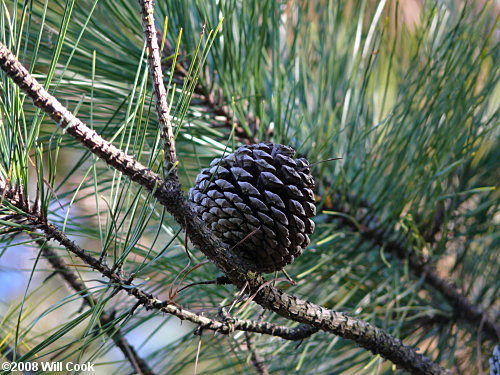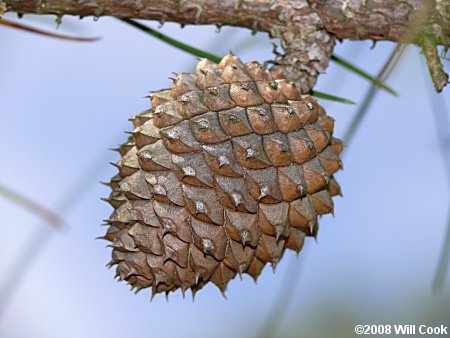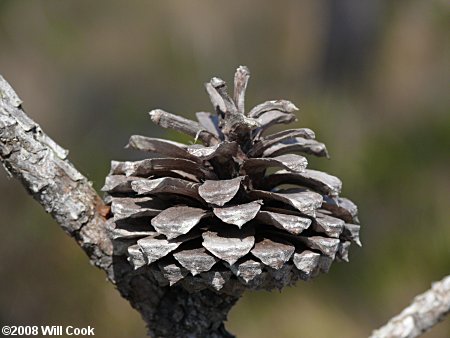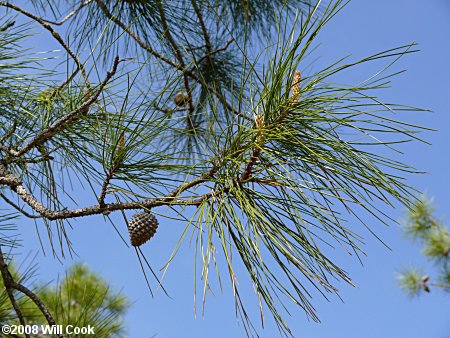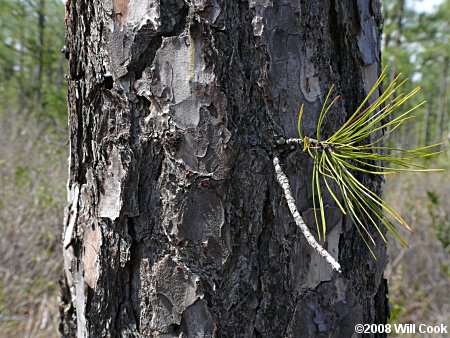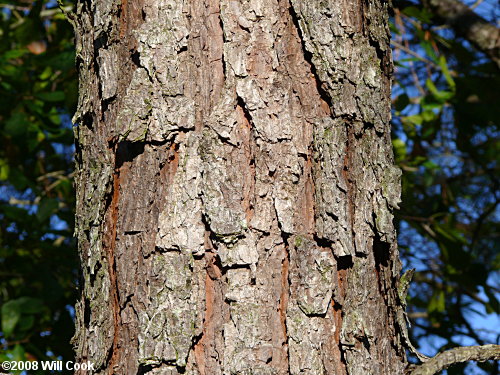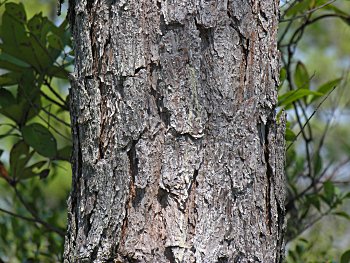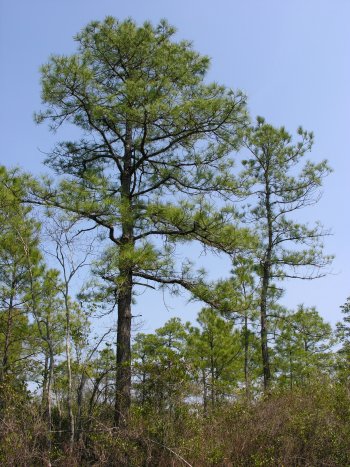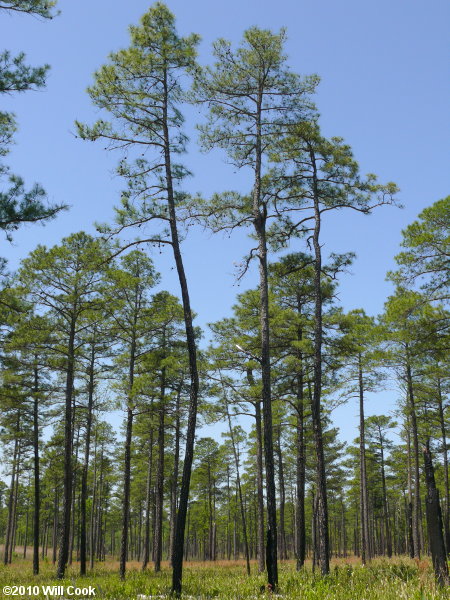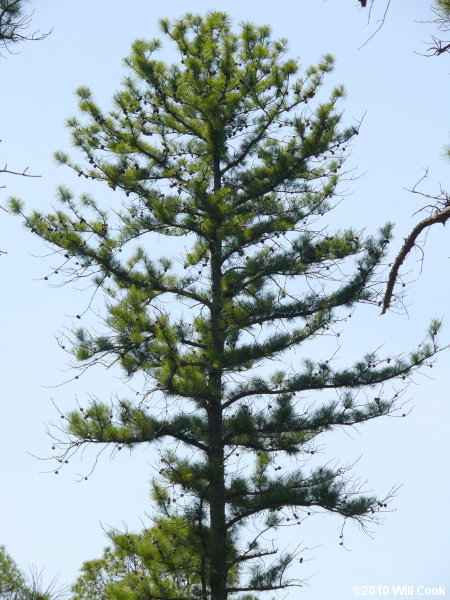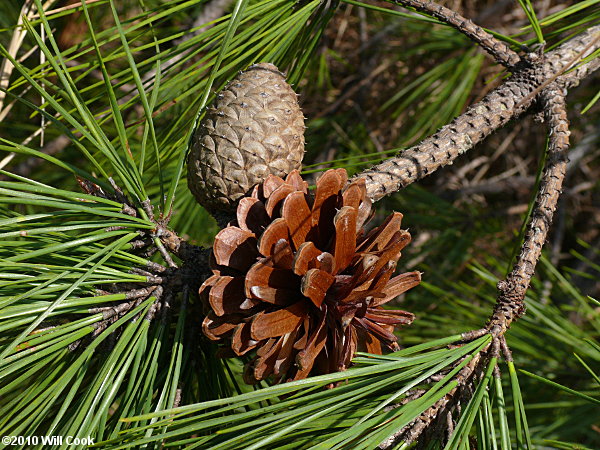
Pond Pine is a common and characteristic tree of pocosins and other wet habitats in the North Carolina Coastal Plain.
Scotland Co., NC 4/18/10.
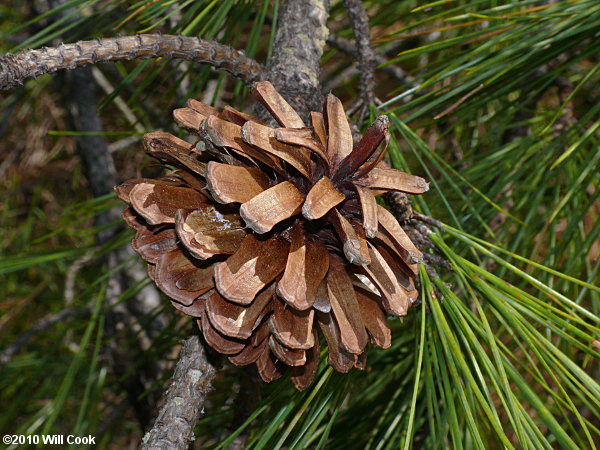
Quite similar to the common Loblolly Pine (Pinus taeda) in leaf, Pond Pine is most easily identified by its female cones, which are as broad as long and have weak prickles.
The cones are late to open (serotina means 'late' in Latin), sometimes but not always waiting until after a fire.
Scotland Co., NC 4/18/10.
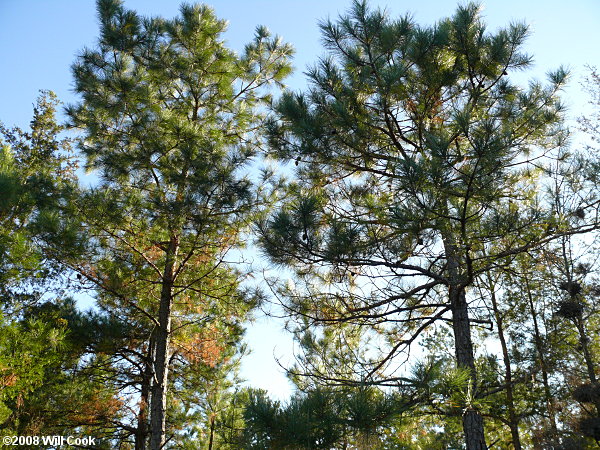
Side-by-side comparison of Loblolly Pine (left) and Pond Pine (right). They're difficult to tell apart without a close look at the cones.
Bladen Co., NC 10/19/2008.

